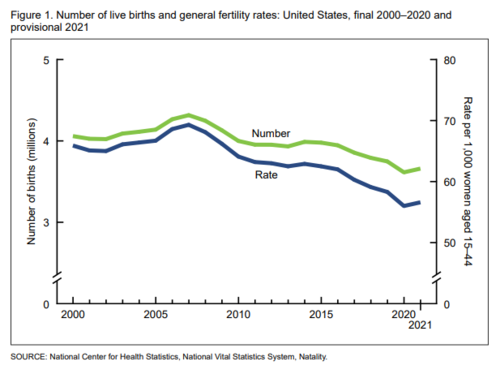Monday numbers: Fewer babies portends a decline in future college enrollment — and money for UNC System schools


That impact is about to grow.
Americans are having fewer children and those who do are waiting longer — a trend a number of studies have pegged to the financial instability of the “Great Recession” that began in 2007.
Fertility rates have never completely rebounded. Though the state’s number of graduating high school students is rising at the moment, that number is projected to decline from 2026 to 2030.
Today, a by-the-numbers look at changing fertility rates across the nation and in North Carolina, where demographic shifts will continue to affect the financial health of the state’s universities.
3.6 million – Number of live births registered in the U.S. in 2020
4 – The percentage decrease that represents from 2019 and the lowest recorded number since 1980. The provisional numbers for 2021 show a slight increase — about 1%. That modest provisional bump (the first since 2014) would still make 2021, save for 2020, the year with the lowest number of births since 1983.
2 – Average percent of decline in U.S. live births each year between 2014 and 2020
0.47% – The one-year U.S. population increase from 2022 to 2023
o.1% – The figure for 2021 — the first year since 1937 in which the U.S. population grew by fewer than 1 million people and the smallest population growth since the U.S. Census Bureau began making annual population estimates
56.2 – Number of births per 1,000 women ages 15-44 in North Carolina — that’s slightly higher than the national rate of 56
43 – Number of U.S. states that recorded their lowest general fertility rate in 30 years in 2020
49 – Number of states in which the general fertility rate declined in 2020, compared to averages from 2001-2020
The one state in the U.S. that reported an increase over that period was North Dakota. Researchers peg its outlier status to economic conditions the robust economy during an oil boom in the state in the early 2000s, leading to a relative baby boom beginning in 2012.
14.9 – Percentage decrease in North Carolina’s general fertility rate in 2020, compared to averages from 2001-2020
4 – UNC System universities that reported increased enrollment for the fall 2022 semester: Elizabeth City State University, Fayetteville State University, NC A&T University and UNC-Chapel Hill
12 – UNC System schools where enrollment decreased for the fall 2022 semester
(Sources: Data from the Centers for Disease Control and Prevention National Center for Health Statistics, National Vital Statistics reports, U.S. Census Bureau, Pew Charitable Trust report on long-term fertility declines)





